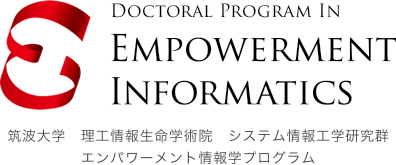Waseda-Tsukuba Leading Summer School 2016を実施しました。
2016年10月1日(土)、2日(日)の二日間にわたり、エンパワースタジオにて、Waseda-Tsukuba Leading Summer School 2016を実施しました。本イベントは早稲田大学実体情報学博士プログラムと本学エンパワーメント情報学プログラム(EMP)との合同で実施され、EMPからは履修生7名が参加しました。
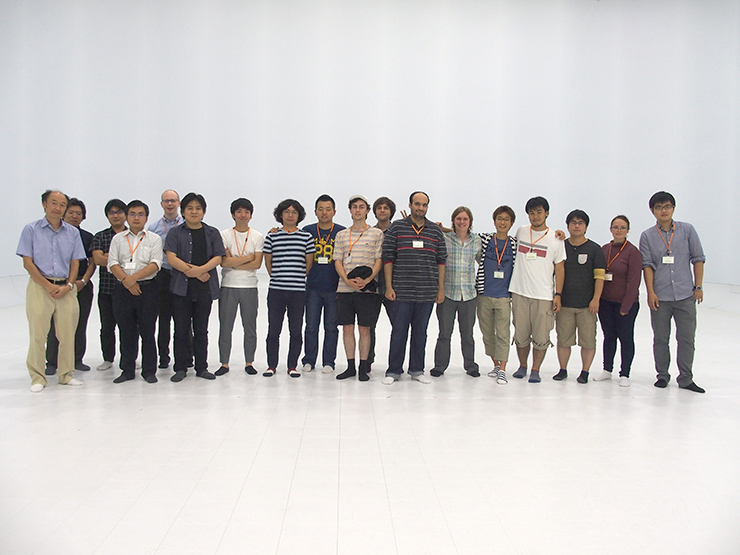
Large Spaceでの集合写真
まず授業「エンパワーメントプロジェクト研究」の発表会が実施され、その後、エンパワースタジオにある世界最大級のバーチャルリアリティ(VR)空間Large Spaceを使用しVRコンテンツを提案・制作するハッカソンが行われました。参加者はチームに分かれ、企画・試作を行い、2日目の成果発表会では学生同士の討論と教員からの講評が行われました。
また、サマースクール実施後に行われた情報交換会では、学生同士の懇親だけでなく、プログラム間の学術的交流を深める良い機会となりました。
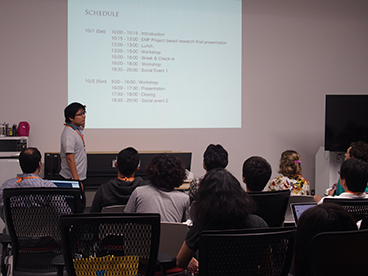
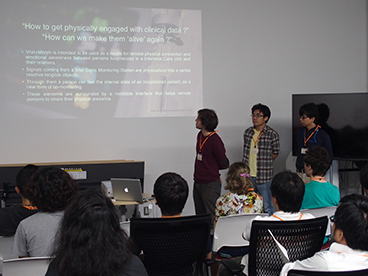
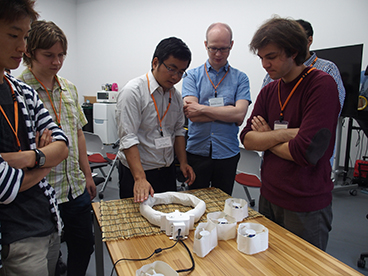
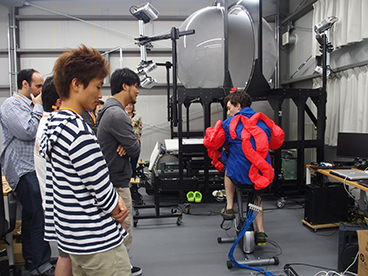
授業「エンパワーメントプロジェクト研究」の成果発表の様子

The 2016 Waseda-Tsukuba Leading Summer School (WTLSS) was conducted at the EMP Empowerment Studio over the course of a single weekend. For two days the students, in groups comprised of members from both Tsukuba and Waseda, collaborated to build an interactive system for the floor of the Large Space. The projects could take advantage of the Large Space’s complex projection and tracking systems to create interactive surfaces. Additionally, groups could construct custom interactive controllers and sensors to aid in a user’s experience.
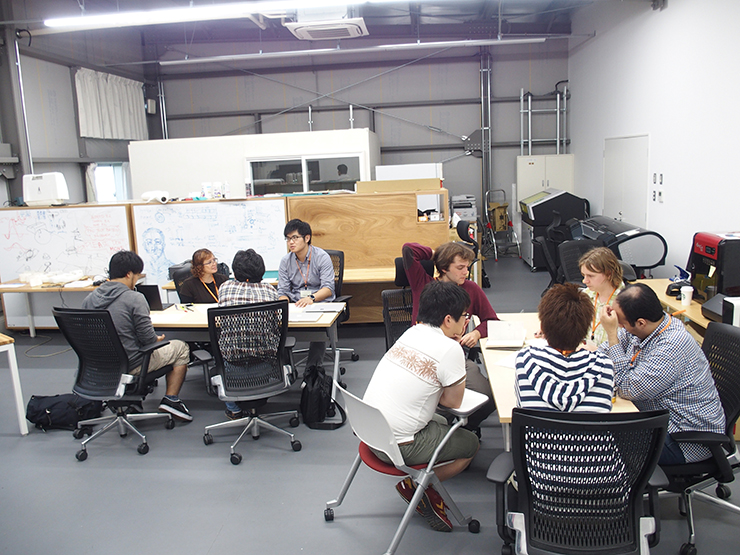
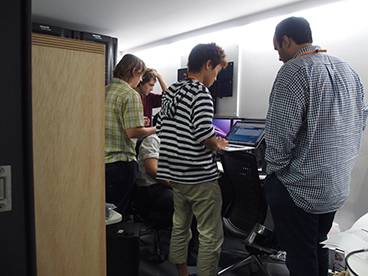
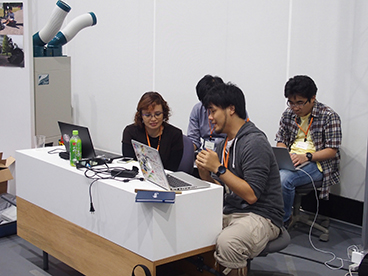
チームに分かれての作業の様子
My team was interested in using the Large Space’s tracking system to help vacationing pedestrians prepare for busy and perilous crossings of Tokyo, in particular the famous yet notoriously crowded Shibuya crossing. We developed an “infinite crosswalk” in which rows of virtual pedestrians would move across the floor. Each row of people contained a small, randomly placed opening for the person in training to pass through. If the user happened to collide with one of the virtual pedestrians, that virtual person would let out a grunt and the user’s personal-space indicator would turn a deep red.
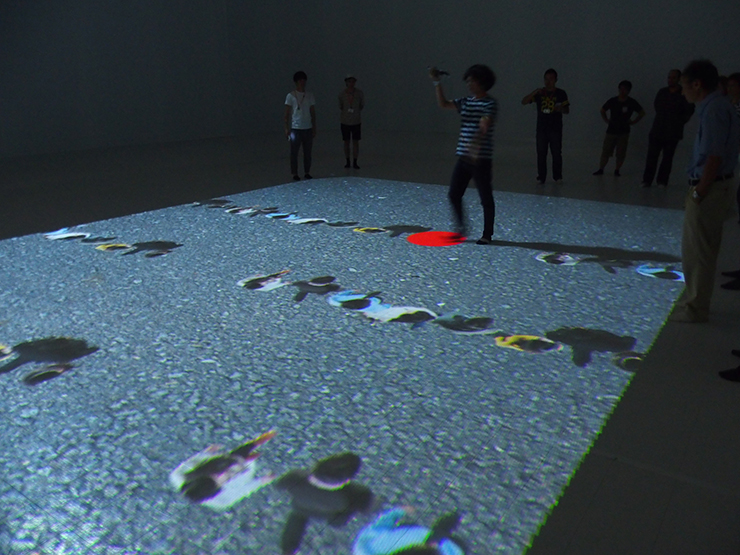
Brumleyさんのチームの作品
It was quite difficult to develop such a project in the short amount of time allotted for the workshop. Given these limitations, it was required that our team develop our idea, connect our software to the Large Space’s sensors, and divide the work into manageable units in order to present a functioning system at the end. Every group was able to finish their projects in time, owing to all the students’ abilities to adapt to novel and demanding challenges.

We were very motivated to build a nice application. We started with an energetic brain storming session in which we explored the expertise of the group members and considered the various combinations of software and hardware we were interested in using. We decided to go for an agile approach in realizing our project, together developing a minimal prototype and then in pairs adding more features to the system.
Unlike the other groups we wanted to create a game with multiple players in which they could compete with each other. Our concept was based on the idea of air hockey, in which two players try to shoot a puck into each other’s goal. Because we wanted the game to work with any amount of players we reversed the concept, making the players act like a puck and run around trying to score points. Scoring could be done by collecting items, and because of limited time we had only one item, a while square representing tofu. Another challenge for the players was avoiding pucks which were moving around in the game world. As time progressed the amount of pucks in the game increased. We also implemented some basic physics allowing players to kick pucks toward each other.
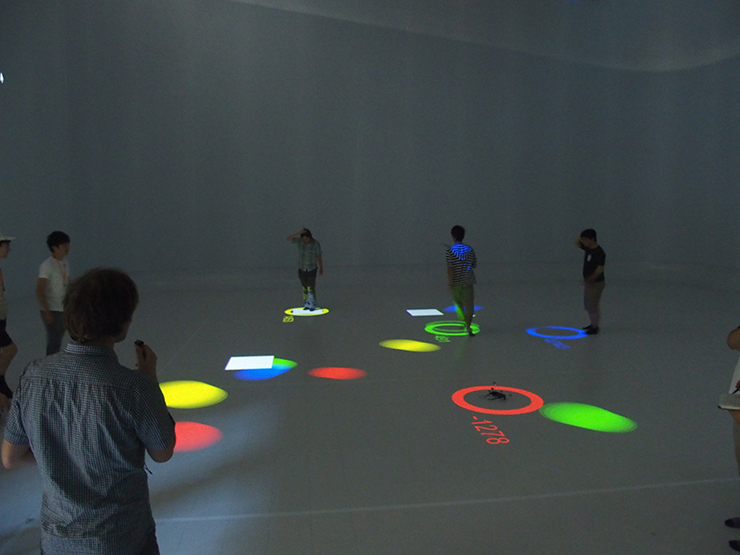
Erichさんのチームの作品
We ended up second. I think we could have improved the game by simplifying the game mechanics and improving the quality of the graphics. In the end though I am really happy with what we managed to accomplish in such a short time frame, as well as how much fun it was to work with the Large Space.
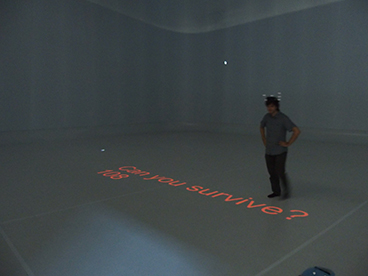
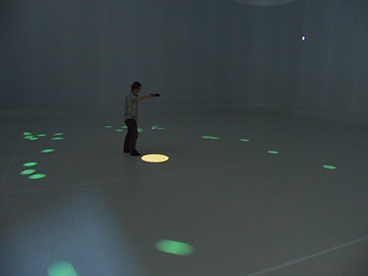
その他のチームの作品
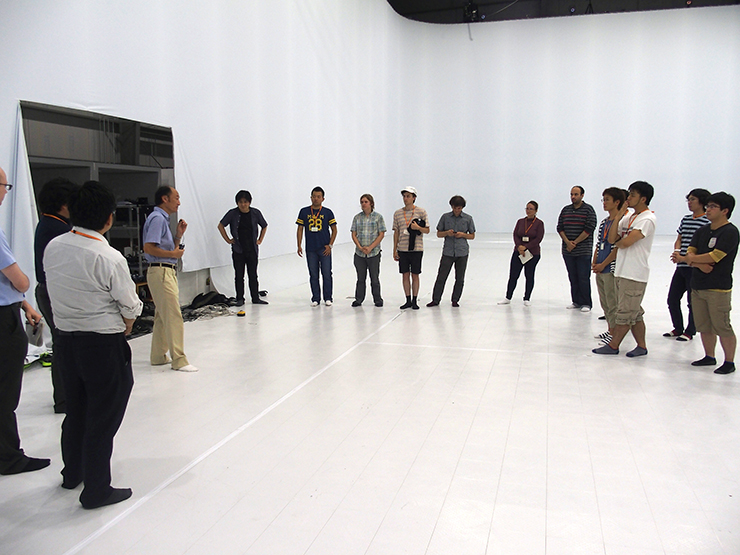
討論・講評の様子


